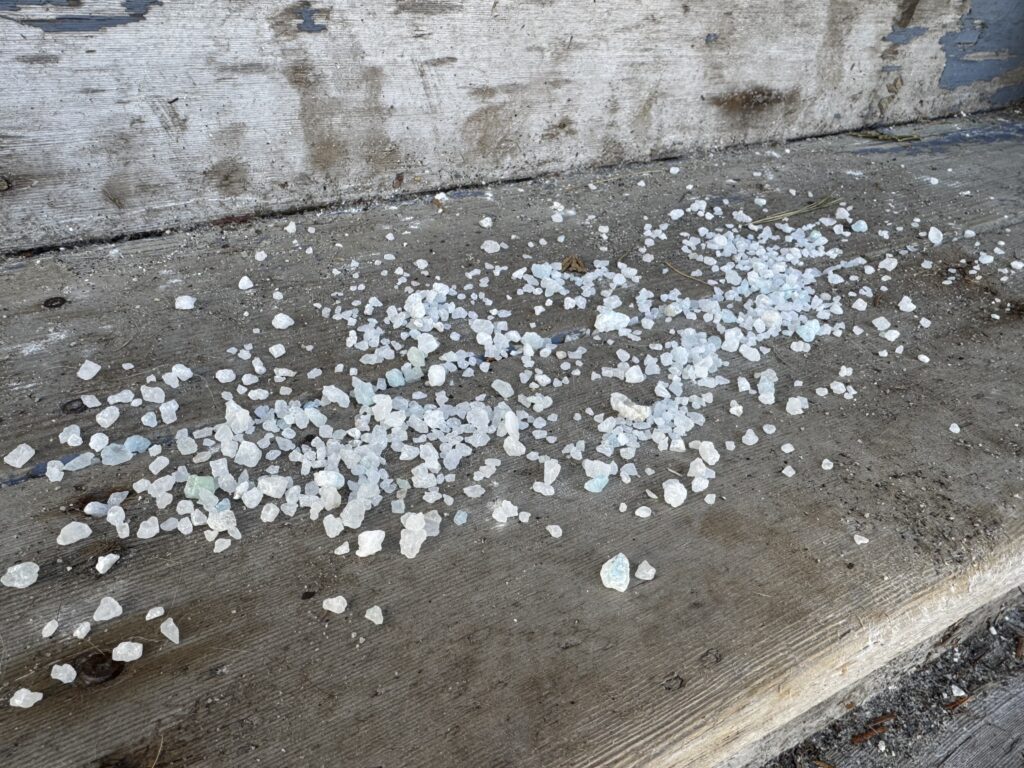Wintery precipitation can be fun, but it can also make travel and moving about outside dangerous. When it snows the first thought is often to reach for the salt. Its an effective and low cost solution, but come spring the downside start to show. Grass and other plants can get ‘burned’ by excessive use of salt. The extra salt eventually enters waterways where it can impact rivers and lakes.

Traditional deicers
Typical ice melt is a mixture of chloride salts, including sodium chloride. Yep, table salt. Others include magnesium chloride and calcium chloride. These salts work by lowering the melting point of the water around them.
- Rock salt, Sodium Chloride, or NaCl is useful because its cost effective and large enough to add traction. It works down to 15F but is slower and more corrosive to metals, pavement, and of course to plants.
- Magnesium chloride or MgCl2 is less corrosive than rock salt, faster acting, and less damaging to plants. Its also effective down to 0F! It does however need to be applied in large quantities and is more expensive than rock salt.
- Calcium Chloride or CaCl2 is less corrosive than rock salt, works quickly and effectively down to -15F! Unlike the MgCl2 calcium chloride does not require large quantities, but it can damage some metals and plants.
Green Alternatives to deicing during winter
Several alternatives to these traditional ice melts are available. Acetate, urea, carbohydrate, and other natural materials can be used in place of harsh salts. These alternatives work similarly to traditional deicers or by increasing the traction.
- Calcium Magnesium Acetate(CAM) is a great alternative because it can be applied either in a solid or liquid format, is non-corrosive to concrete and safe to use near plants and animals. Its effective at milder temperatures of 15-20F and must be more often than other salts.
- Urea-based or Carbamide deicers are a highly effective alternative working down to 0F, non-corrosive to concrete. Its also safe and non-irritating to pets. It can be more expensive than other salt deicers.
- Cat Litter, Sand, and Wood Ash are additional materials that can be substituted for corrosive salts. Cat litter does not melt ice but does provide temporary traction. Sand also does not melt ice but does provide continued traction. Wood ash can melt ice, is little to no cost, and can help fertilize the plants near roads and walkways.
Have questions about deicers? Looking for winter traction solutions? Contact the Safety & Sustainability team!
EHS Director: Ronnie Souza | rsouza@une.edu | 207-602-2488
Associate Director of Sustainability: Alethea Cariddi | acariddi@une.edu | 207-602-2507
EHS Specialist: Peter Nagle | pnagle@une.edu | 207-602-2791
EHS Specialist: Davis Martinec | dmartinec@une.edu | 207-602-2046

